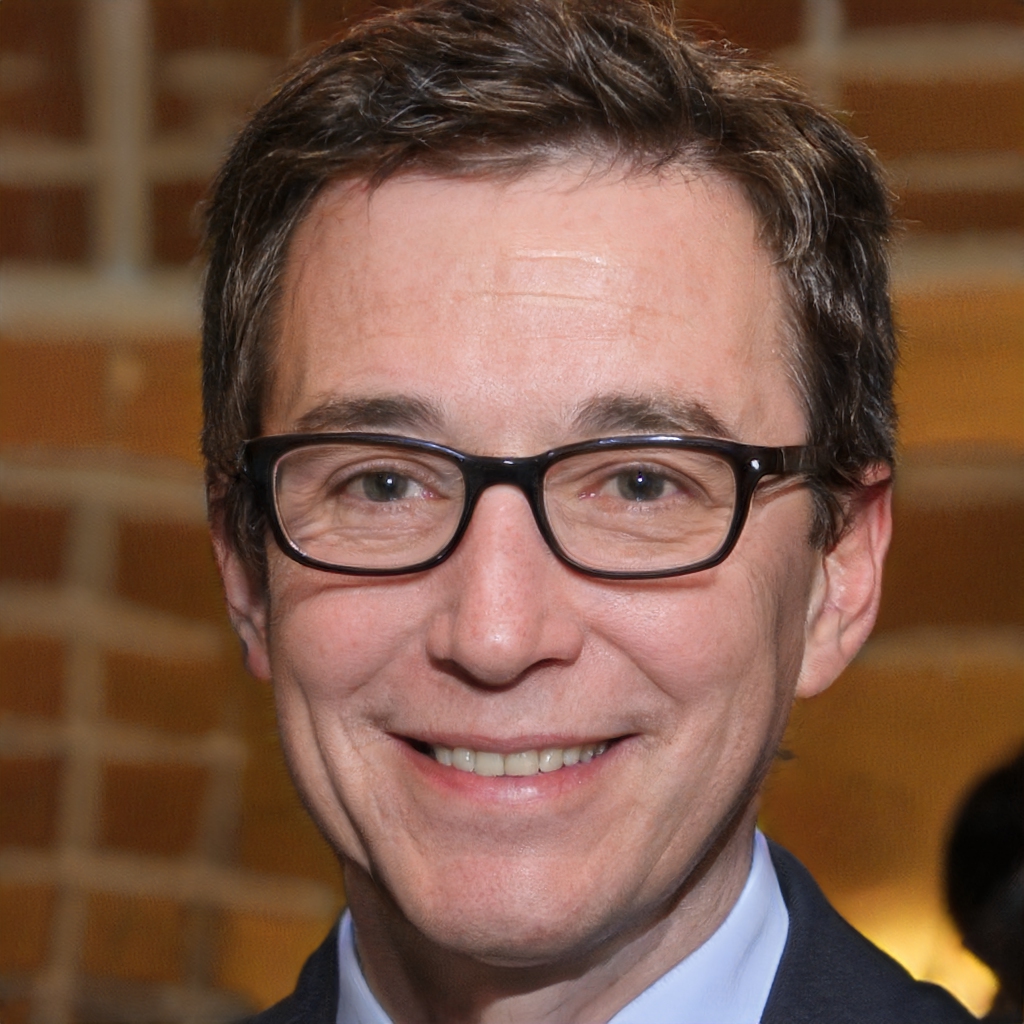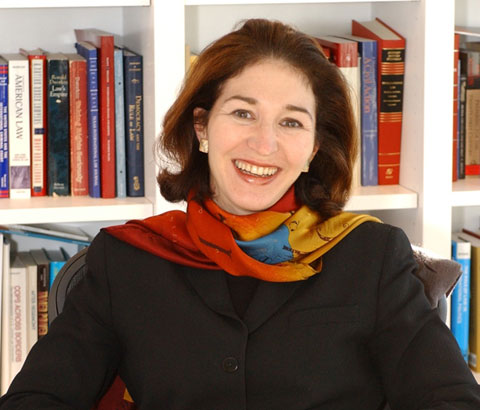State Dept Project Signals Foreign Policy Shift
The planning process is expected to result in significant policy changes.
Jul 31, 202090.5K Shares2.5M Views
Anne-Marie Slaughter (Photo Courtesy of Princeton University)
Anne-Marie Slaughter was attending a private lunch on Tuesday at the International Finance Corporation in Washington when she saw the gap between what U.S. foreign policy is and what it needs to be. Discussed around the table: the myriad changes to the development landscape now that commercial banks and investment funds are joining with private foundations and corporations to assist governments and multilateral institutions on anti-poverty programs. While development work has been trending in this direction for years, even decades, the United States’ principal instruments of foreign policy, the State Department and USAID, hadn’t kept pace.
For Slaughter, the State Department’s director of policy planning, the lunch crystallized the need to refit the capabilities of the State Department and USAID — the independent development agency that reports to the Secretary of State — to better match an increasingly complex world. Which was fortuitous, since the project taking up the vast majority of Slaughter’s professional time is an ambitious top-to-bottom review of those capabilities for precisely that purpose.
Illustration by: Matt Mahurin
In July, Slaughter’s boss, Secretary of State Hillary Rodham Clinton, announced a new planning and budgeting document, called the Quadrennial Diplomacy and Development Review, or QDDR, created to “effectively design, fund, and implement development and foreign assistance as part of a broader foreign policy” every four years. It is the first such effort for the State Department, which is not known for a culture of planning, and is modeled after a planning document produced by the Defense Department that reassesses and guides strategy on a recurring basis.
Clinton put Slaughter, acting USAID administrator Alonzo Fulgham and Deputy Secretary of State Jack Lew in charge of creating the document — a process of managing five working groups chaired by top-level agency heads to produce an interim report in January and a final document by next September. Last week, in an address to the U.S. Global Leadership Coalition, Lew defined the nascent QDDR process as an attempt to redress “a serious imbalance” in funding over decades that has left the “military but not civilian agencies resources to support expanding international roles.”
But in an expansive interview in her office on the State Department’s seventh floor, Slaughter, a former dean of Princeton University’s Woodrow Wilson School of Public and International Affairs, outlined the broader strategic concepts that are driving the QDDR. “This is not an abstract planning exercise that goes into a report and sits on a shelf,” she said. “It’s a planning exercise that does connect to the budget, that’s very important, but the implications go far beyond the budget. The budget is the tool to implement what we’re going to come up with. This is really what I think secretaries of state should be doing, which is a kind of farsighted look into how the United States is going to implement its foreign policy agenda in the 21st century.”
The review comes as at a time when the State Department is facing existential questions about its utility to American foreign policy, and some aren’t so sure that it will be as influential as Slaughter believes. In a provocative articlelast month for Foreign Policy magazine, public-diplomacy specialist Matt Armstrong called the agency “broken and paralyzed, unable to respond to the new 21st-Century paradigm” where both state and non-state actors influence the global agenda. “The QDDR will ultimately be just a document. What it spurs will be the real test,” Armstrong, whose article urged radical departmental restructuring, said in an interview. “As we know from the struggle for minds and wills around the world today, words only go so far.”
Asked if the QDDR will result in institutional changes at the State Department and USAID, Slaughter answered simply, “Yes.” While she said she could not yet determine would precisely would change, the QDDR’s working groups are asking a fundamental question: “What do we need?”
Three broad conceptual lines will determine the answer. The first, Slaughter explained, is that U.S. foreign policy is beset with “collective problems” — from terrorism to climate change to pandemic disease — that require joint international action, something all the stakeholders at Slaughter’s International Finance Corporation lunch recognized. “How are we going to allocate our resources and organize ourselves to be able to work cooperatively, while maintaining enough freedom of action to play the leadership role that we think we ought to play?” The corollary implication of that question, Slaughter indicated, is that the State Department and USAID need to strengthen their partnerships with different multilateral institutions, but also different U.S. agencies and departments, military and civilian — but not replicate their existing strengths.
“When we do food security, we talk to Agriculture,” Slaughter said, giving an example of current interagency cooperation that might be bolstered after the QDDR process is complete. “We’re doing global health; we’re talking to [the Centers for Disease Control] and [the Department of Health and Human Resources]. That’s great! State doesn’t want to duplicate that.” The same goes for the Millennium Challenge Corporation, which awards development grants to countries based on governance capabilities: “We have MCC people engaged in the QDDR and will definitely be learning from and considering its experience in how we integrate diplomacy and development.”
Accordingly, the second concept is about how State and USAID work with the military to address “the question of civilian operational capacity to crisis.” The widespread inability of the State Department and USAID — with budgets representing a tiny fraction of the half-trillion-per-year Defense Department — to deploy to conflict zones has expanded the military’s role in stabilization and reconstruction duties broadly understood to be civilian tasks. The problem has grown so pronounced that a number of ad hoc solutions have emerged. Earlier this month, Lt. Gen. William Caldwell, director of the Army’s Combined Arms Center, teamedwith scholar Beth Cole at the U.S. Institute of Peace to write a field manual for civilian operations in stabilization and reconstruction, after the senior State Department official dealing with those issues, Amb. John Herbst, observed that his office lacked any doctrinal guidance.
For Slaughter, the QDDR will address the “space between what AID or DIFD [the U.K.'s foreign-assistance agency] or UNDP [the United Nation Development Program] does and what peacekeepers and international armies do” in conflict zones and failed or fragile states. But she does not believe that the first QDDR can arrive at a definitive answer for what that capability is or how State and USAID can develop it, since the issue would require “continually asking and figuring out how we answer it.”
The final overarching construct the QDDR will address goes back to Slaughter’s International Finance Corporation lunch. Powerful states remain “very, very important” in geopolitics,” she said, but “the landscape of nonstate actors is so dramatically different,” requiring State and USAID to think about how to perform diplomacy and and development work in an international environment where investment banks, multinational alliances, private advocacy groups, religious institutions and other players “have the power that once only states had.”
Slaughter does not yet know how the QDDR will answer to those questions. “I think by framing the questions that way, you’re asking people to look at the capabilities that we need” and then identify existing gaps.
That task falls to the five working groups that she oversees — working groups that comprise senior officials from across both State and USAID. Kurt Campbell, the assistant secretary of State for East Asia, and Karen Turner, director of USAID’s office of development partners, head the group responsible for “Building a Global Architecture of Cooperation.” Maria Otero, the undersecretary of state for democracy and global affairs, and Gloria Steele, USAID’s global-health chief, work on whole-of-government solutions. Johnnie Carson, State’s top African-affairs official, and George Laudato, USAID’s Mideast chief, handle “Investing in the Building Blocks of Stronger Societies.” Conflict prevention and response is under Eric Schwartz, State’s assistant secretary for population, migration and refugees; and Susan Reichle, USAID’s senior democracy and humanitarian assistance official. And Ruth Whiteside of State’s Foreign Service Institute and JeanMarie Smith, Lew’s special assistant, are in charge of “Building Operational and Resource Platforms for Success,” along with USAID’s acting administrator for management, Sharon Comer.
The presence of senior officials from both organizations in the QDDR process ensures that it doesn’t remain confined to Slaughter’s policy-planning shop. “This is something the whole building is doing,” she said, “with Policy Planning, with AID and with Jack at the top.”
Only one policy option has been ruled out: dissolving USAID and moving development work to the State Department. “There will be no merger,” Slaughter said. “Secretary Clinton has made clear she wants a strong AID, a well-resourced AID, [and] wants diplomacy and development well-integrated.”
Armstrong has a similar focus, but he wondered how thoroughly the QDDR would adopt the critique. “A focus of the QDDR seems to be State’s ability to play well with others,” he said. “But creating more plugs and sockets to connect with other agencies will be of little value if the internal bureaucratic friction that inhibits agility and creativity are not addressed.” He said that the department would need to abandon its bureaucratic “emphasis on national borders”– the State Department is primarily organized around countries, rather than transnational phenomena — if it wants to become “become an effective alternative and counterweight to DOD.”
Whether the QDDR will adopt that critique remains to be seen. But even if it doesn’t, Slaughter indicated that she shares the concern that animates it. “To redress the imbalance between [the Pentagon] and State/AID in the 21st Century, we need vastly increased capabilities,” Slaughter said, “and we need to be organized in a way that lets us engage other parts of government but also a whole new landscape of both diplomatic and nongovernmental actors.”
Correction: An earlier version of this piece stated that Sec. Clinton placed James Michel, a senior USAID official, alongside Lew and Slaughter at the helm of the QDDR process. While Michel plays a leading role with Slaughter at the implementation level, the USAID co-chair of the process is acting Administrator Alonzo Fulgham.
An earlier version of this piece neglected as well to note that Sharon Comer, the acting USAID administrator for management, is the lead USAID representative on the “Building Operational and Resource Platforms for Success.”

Dexter Cooke
Reviewer
Dexter Cooke is an economist, marketing strategist, and orthopedic surgeon with over 20 years of experience crafting compelling narratives that resonate worldwide.
He holds a Journalism degree from Columbia University, an Economics background from Yale University, and a medical degree with a postdoctoral fellowship in orthopedic medicine from the Medical University of South Carolina.
Dexter’s insights into media, economics, and marketing shine through his prolific contributions to respected publications and advisory roles for influential organizations.
As an orthopedic surgeon specializing in minimally invasive knee replacement surgery and laparoscopic procedures, Dexter prioritizes patient care above all.
Outside his professional pursuits, Dexter enjoys collecting vintage watches, studying ancient civilizations, learning about astronomy, and participating in charity runs.
Latest Articles
Popular Articles

